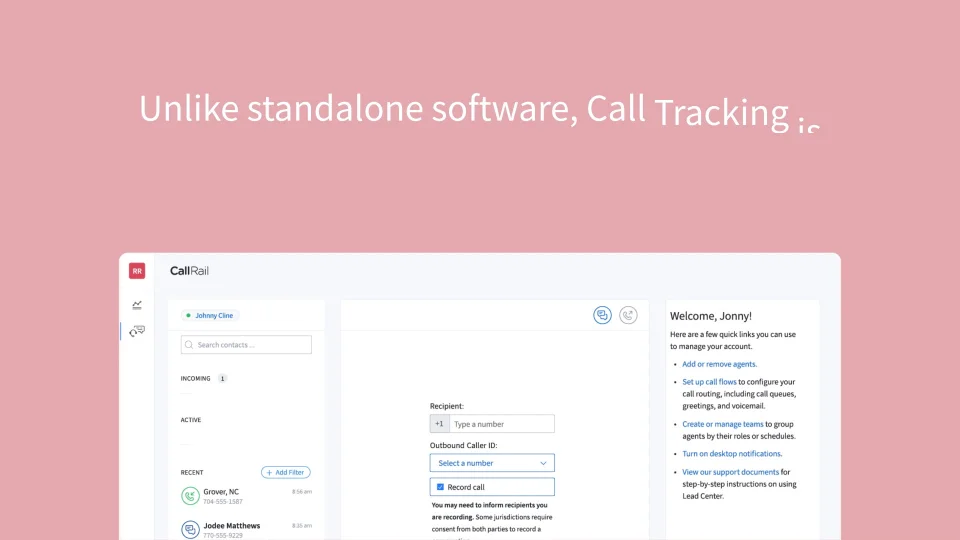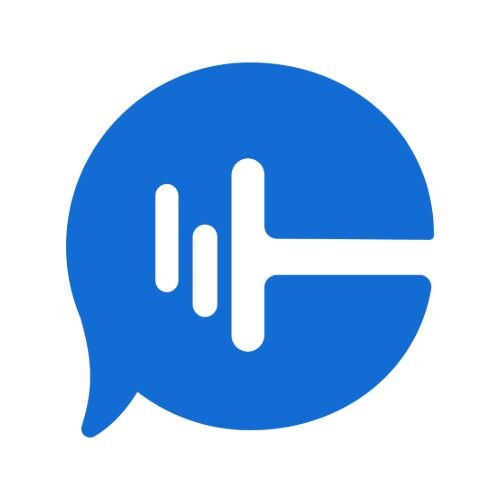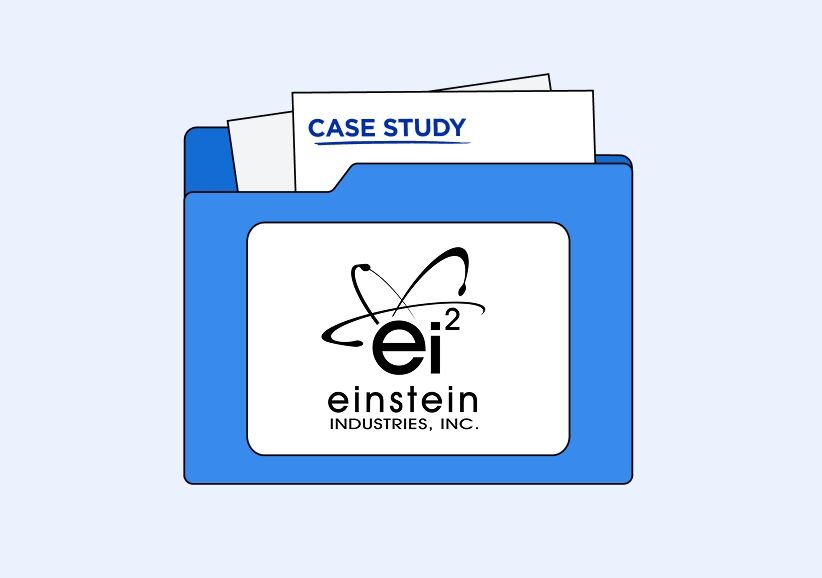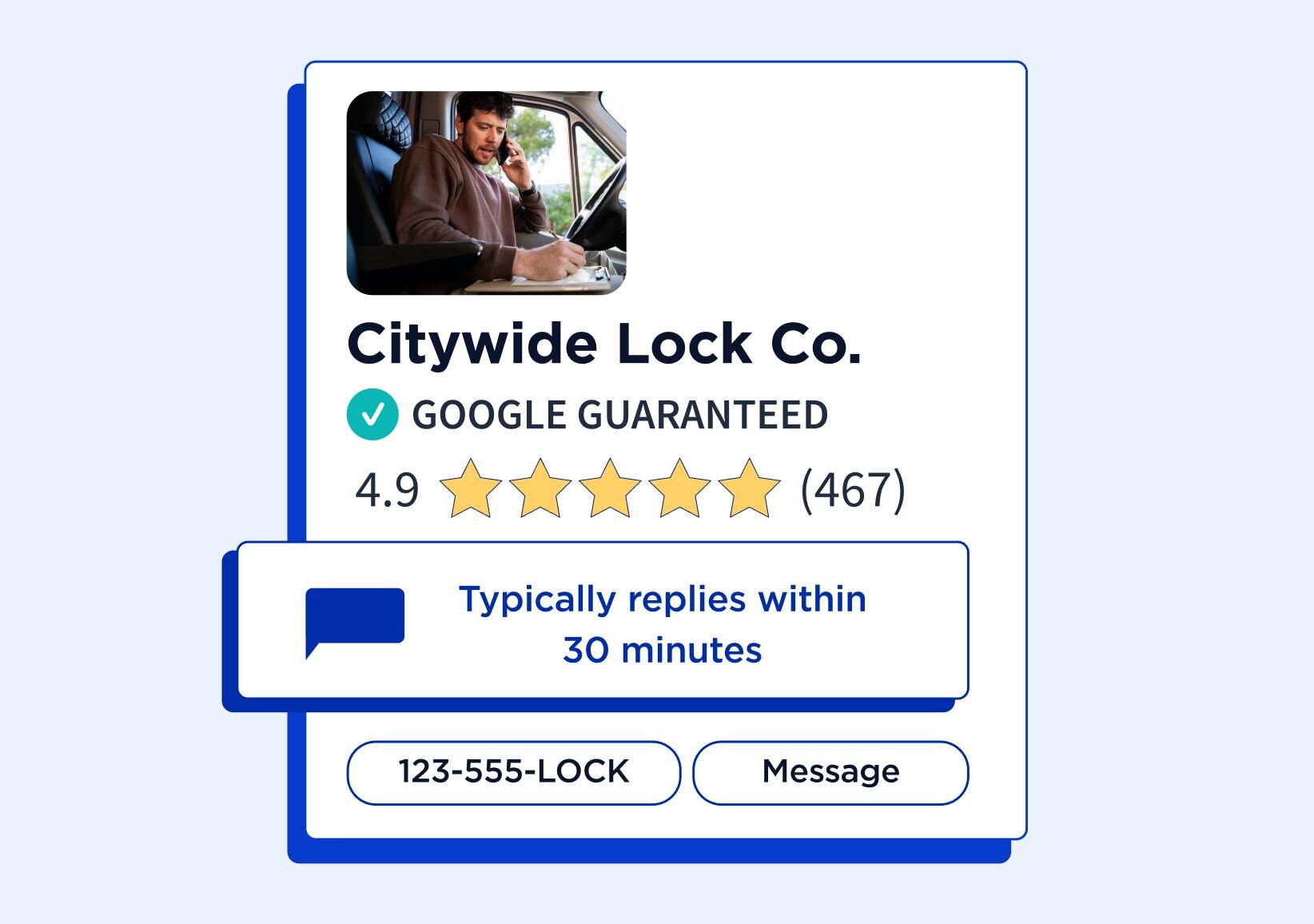Whether you run a small business or a large company, understanding how to track phone calls can provide valuable insights. But what does call tracking entail? This guide will explain what call tracking is and how businesses can use it to improve marketing, customer service, and overall performance.
What is call tracking?
Marketers are always looking for ways to connect their efforts to customer engagement. CallRail's Call Tracking is one of the best tools for this as it links online and traditional ads to phone calls, helping businesses see how their marketing turns into leads and sales.
Phone calls are still a key way customers connect, with 80% preferring to call for quick support. Call tracking provides data on what drives these calls, allowing businesses to improve their strategies and get better results.
This guide will explain how call tracking works and why Callrail’s Call Tracking is a must-have for data-driven marketers. You’ll learn how it can help you:
- Track which campaigns bring in valuable calls.
- Find the keywords that lead to phone conversions.
- Use call scoring to prioritize your best leads.
- Optimize ad spend to improve lead quality.
Keep reading to see how call tracking can take your marketing to the next level and drive real business growth.
How does call tracking help your business?
Call tracking helps marketers link phone calls to specific campaigns by assigning unique tracking numbers. When a call comes in, advanced tools trace it back to the marketing source, offering clear attribution.
In today’s data-driven environment, tracking offline calls from digital efforts is essential for measuring performance. Call tracking answers key questions like:
- Which campaigns drive high-value calls?
- How well do digital ads convert into inbound calls?
- What keywords, locations, or landing pages generate the most phone leads?
Thanks to these insights, marketers can optimize budgets, refine underperforming elements, and enhance lead quality. The best call tracking solutions even integrate with CRMs to personalize calls in real-time, proving call tracking’s role in maximizing ROI and improving the customer journey.
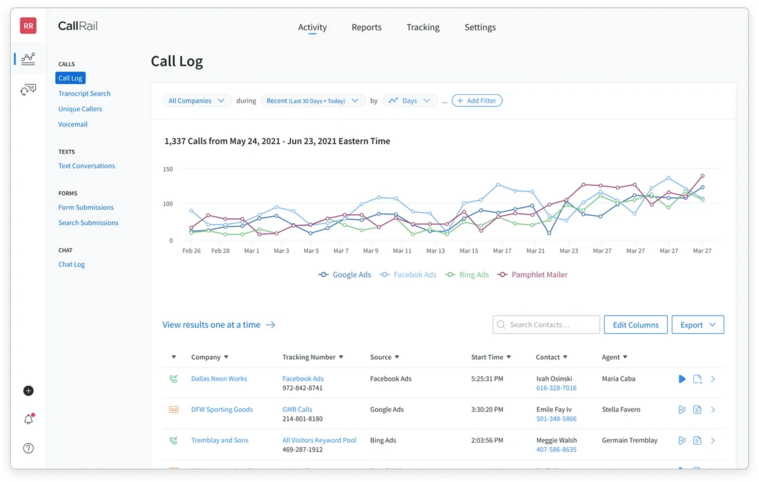
Finding a call tracking service: What to look for
To track phone calls, you’ll first need to invest in a call tracking service, like CallRail. There are many call tracking service providers out there, so it’s essential to know which features you need before landing on the right one for you.
Some must-have features include:
Dynamic number insertion
Dynamic number insertion is the cornerstone of call tracking. This feature dynamically swaps out numbers from your very own pool of phone numbers so you can correlate incoming calls with specific sources. Dynamically swapping phone numbers also allows you to track the source of incoming calls, such as a particular advertisement or marketing campaign. Knowing who your customer is and which source is the most effective at driving calls eliminates any guesswork and allows you to make better business decisions.
This diagram depicts how CallRail’s dynamic number insertion assigns each website visitor a unique number, providing you with specific details about what they viewed on your site and what drove them to pick up the phone and reach out.
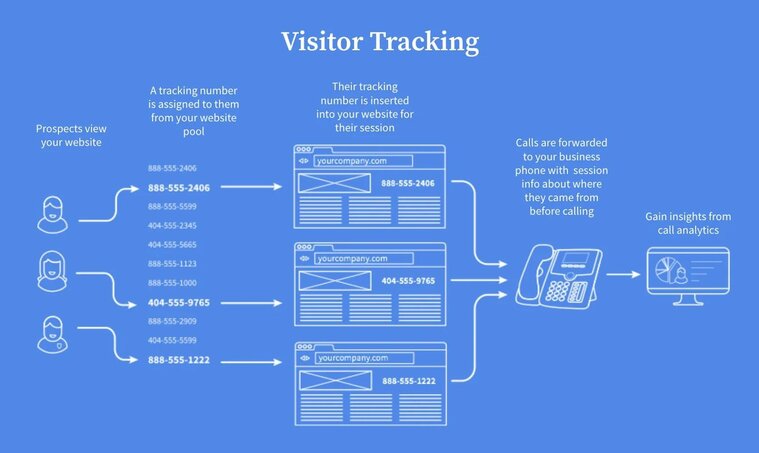
Multi-channel attribution
Using call tracking to determine which source drove a phone call is great, but being able to track your customer’s entire journey leading up to a call is even better. Multi-channel attribution gives you the ability to see each touchpoint that led to a call, including which campaign drove a caller to your website, which pages they interacted with, and the last action they took before calling you.
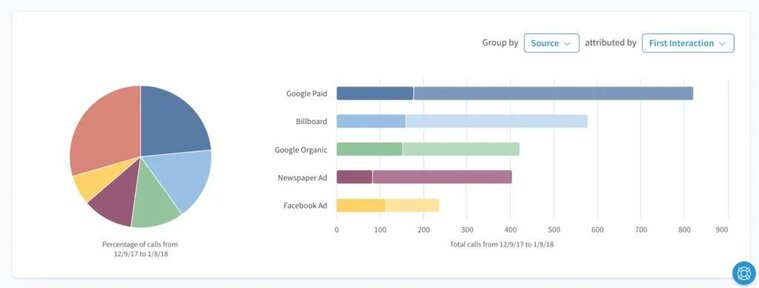
Call recording
Call recording is essential for quality assurance. How do you know how well your staff handles customer calls unless you record them? We’ll talk more about the benefits of call recording later on in this post.
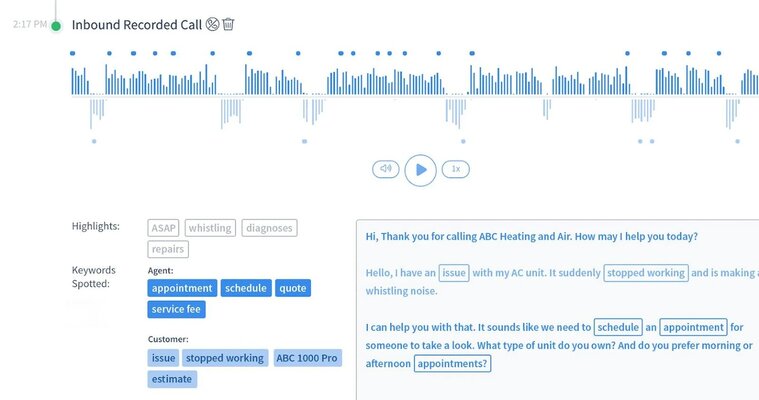
Integrations
Call tracking shouldn’t replace your existing analytics platform but rather enhance it. Make sure the call tracking platform you decide on integrates with programs you regularly use, like Google Ads and Analytics, HubSpot, Salesforce, and more. Check out CallRail’s library of integrations here.
User-friendliness
You have enough to worry about, and learning how to use a call tracking platform shouldn’t be another annoying thing on your to-do list. Your call tracking service’s interface should be clean, easy to understand, and intuitive. It should also offer outstanding customer support to help you when you need it.
Call Transcription
Call transcriptions are a vital tool for modern businesses. They transform spoken conversations into written text, making it easier to access and review important details from any call. AI-driven transcriptions are fast and accurate. They are helpful in noisy environments where it might be hard to hear recordings clearly.
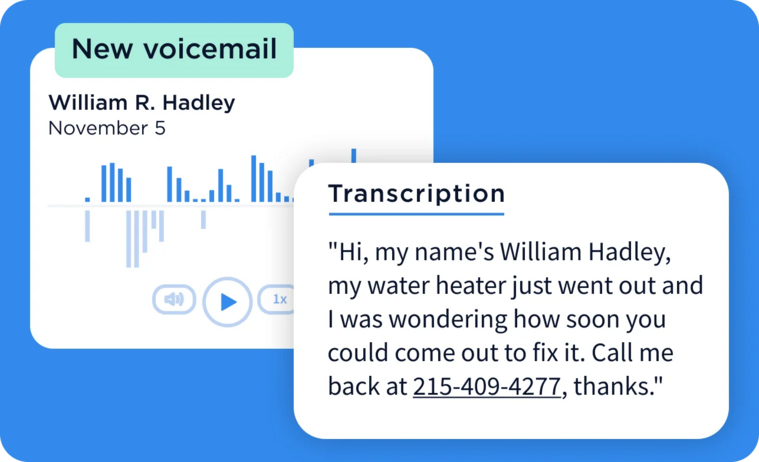
Benefits of Call Transcriptions:
- Accessibility: Call transcriptions provide equal communication access for everyone, including those with hearing difficulties.
- Training and Development: Transcriptions offer invaluable insights for training new team members. By analyzing transcripts, you can pinpoint effective communication strategies and areas needing improvement, helping streamline your training process.
- Quality Assurance: Managers can monitor call quality efficiently without listening to every call. Tools like live sentiment analysis provide real-time feedback, helping supervisors maintain high service standards across teams.
Make sure to inform customers when calls are being recorded for training. Using call transcriptions can help enhance both customer service and team performance.
Call Summaries
Call summaries give you quick insights into conversations between your team and customers. Each call summary includes a brief overview of the conversation, usually in three to five sentences. Summaries help you grasp the key points without reading the entire transcript.
Our call summaries feature is HIPAA compliant. Through API and webhooks, you can integrate this data with platforms like Salesforce and HubSpot.
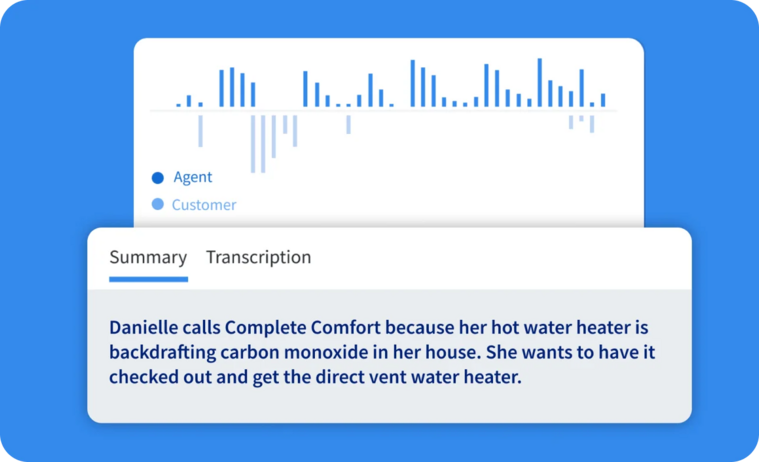
AI assistance
With CallRail’s Convert Assist, you enhance your call tracking experience by integrating AI to support your sales call efforts. This tool provides actionable insights from phone calls to aid in converting that lead.
Key Features:
- Action Plan: The action plan uses AI to analyze the call content and provide actionable next steps for every lead to ensure follow-up and increase lead conversion. These next steps help businesses stay organized and save time, making it easier to jump back into conversations and close deals.
- Call Coaching: AI-powered call coaching analyzes your team's calls in real time and delivers timely, personalized feedback to improve conversations for a better customer experience. For each call, it summarizes what reps get right and identifies areas for improvement.
- Smart Follow-up: During a sales call, whether it’s a discovery, closing a deal, or discussing a new service with a current customer, numerous details are discussed, and it's easy for some to slip through the cracks. CallRail’s Smart follow-up feature helps solve this challenge by using AI to quickly draft a personalized email or text based on your conversations to help you save time and improve customer satisfaction.
Convert Assist can help transform your calls into beneficial guides, enhancing your interactions with leads and customers.
Reporting
CallRail's Call Tracking Reporting provides businesses with detailed insights into which marketing efforts generate valuable leads. By connecting inbound calls, texts, and form submissions to specific campaigns, companies can accurately assess their return on investment (ROI) and optimize marketing strategies.
Features like Multi-Touch Cost-per-lead reporting integrate ad spend data from platforms such as Microsoft Advertising, Facebook, and Google Ads, offering a comprehensive view of campaign performance. Additionally, operational reports help identify peak call times and missed opportunities, enabling better staffing decisions and improved customer engagement.
For those using Semrush to track SEO and marketing performance, My Reports integrates with CallRail to consolidate data from 30+ major digital marketing platforms, including Google Ads and Google Analytics. This automated reporting tool helps marketers track performance, optimize campaigns, and enhance stakeholder communication with features like templates, AI-generated summaries, customizable branding, white-labeling, automated scheduling, and shareable online dashboards.
Create a free report using MyReports here.
Regular reporting is key to understanding marketing impact and making informed decisions. Call tracking provides a clear link between marketing efforts and customer interactions, offering deeper insights that help businesses refine strategies and improve performance.
How to set up call tracking
Once you’ve landed on a a provider, it’s time to set up call tracking for your business. Like everything else, your provider should make this process quick and easy.
With CallRail, getting started is simply done in 3 steps:
1.) Simply create your first tracking number.
To begin, sign up for an account and choose a trial plan. Once logged in, create your first tracking number. Find the "Create Number" button or the plus icon to get started. You'll then select the type of number best suited for your needs, whether it's for online ads, print media, or other purposes.
This number will help you keep track of where your calls are coming from.
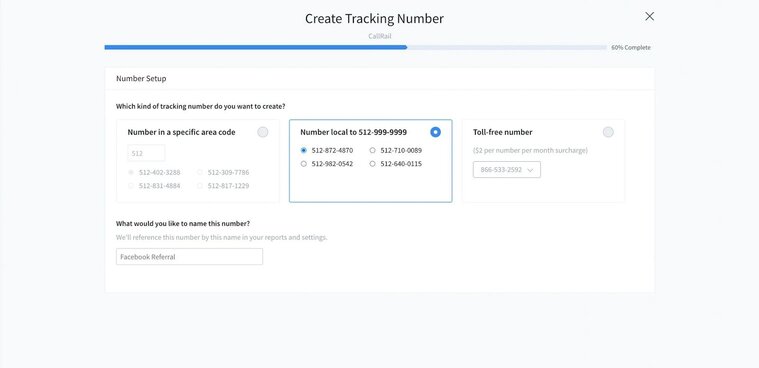
2.) Install your JavaScript code on your site.
If you're using numbers for online tracking, you'll need to install a JavaScript snippet on your website. This code allows for dynamic number insertion, replacing existing numbers with tracking numbers. Installation options include manual addition or using tools like Google Tag Manager or WordPress.
Dynamic number insertion ensures that the right tracking number displays for each visitor, linking calls back to specific digital campaigns.
3.) Assign your number to a source or campaign.
After setting up the tracking number, assign it to a marketing source or campaign. This helps you determine which strategies drive calls. For instance, allocate a specific number to a Google Ad or a social media campaign to understand its effectiveness.
Tracking calls in this way gives valuable insights into which efforts are successful and which need adjustment.
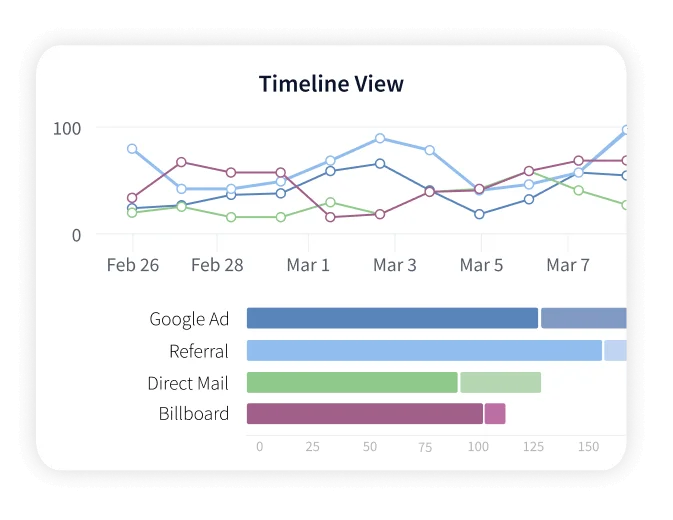
You’ll then be able to use this number for specific sources and see the corresponding data. How easy is that? We have thousands of local and toll-free numbers from which you can choose. CallRail Classroom provides easy-to-follow video instructions to ensure your setup process simple and streamlined.
We also understand the importance of keeping your existing phone number intact. That’s why we make it easy to port your existing number (or numbers) into CallRail: You can begin tracking phone calls immediately without disrupting your brand.
How to track a phone call
Once call tracking is set up, your service will do all the heavy lifting for you. With CallRail, you can see all the vital data about your incoming calls in your CallRail dashboard to track phone calls successfully.
The dashboard lets you see calls and their corresponding data in real time. You’ll find vital information such as caller name, tracking number dialed, source of the call, caller phone number and location, and any PPC keywords your caller used to find your business online. You can then download reports straight from your dashboard or sync your call tracking data with Google Analytics and Ads for in-depth insights.
Since the data about your callers is displayed in real time, you can use it to shorten your lead response time and boost conversions. You’ll also be able to use this information to optimize your business better.
Benefits of call tracking
Call tracking is now a critical tool for marketers, offering clear attribution and optimization insights. It connects marketing efforts to high-value calls, making it indispensable for growth-focused strategies.
The 5 top reasons call tracking is a must-have
1. Accurately Link Calls to Campaigns
Unique tracking numbers tie inbound calls to digital and offline marketing sources, eliminating guesswork and improving efficiency.
2. Maximize Marketing ROI
By identifying which campaigns drive the most calls, marketers can refine messaging, adjust budgets, and eliminate underperforming tactics.
3. Personalize Customer Interactions
CRM integration provides agents with real-time caller insights, enabling seamless and relevant conversations from the start.
4. Track Call Outcomes and Conversions
Syncing with analytics platforms maps the customer journey from initial engagement to revenue impact, ensuring data-driven decisions.
5. Leverage AI for Continuous Improvement
Speech analytics reveal key trends, customer sentiment, and competitive insights, refining campaigns based on real conversation data.
Call tracking bridges the gap between digital marketing and offline conversions, delivering unmatched visibility and ROI confidence for data-driven marketers.
Additional benefits
Call tracking has other benefits that span well beyond simply knowing who’s calling your business. Call tracking can also help you:
Optimize your marketing ROI
Call tracking helps you identify which marketing campaigns drive the most sales. By assigning unique phone numbers to different marketing channels, you can see which ads or campaigns lead to phone calls. This means you can focus your budget on strategies that actually work.
You can also improve ad targeting when you know exactly where your leads are coming from. More precise targeting means more conversions and better overall results for your company. Improve campaign effectiveness through data-driven decisions and watch your marketing ROI grow steadily.
CallRail’s in-depth features allow you to track your campaign performance and give you insight into which campaigns are performing the best to help you tweak your marketing strategy for increased ROI.
Improve your staff’s customer service skills
Many call tracking providers, like CallRail, offer call recording as part of their services. Call recordings allow you to listen back on conversations between your employees and customers to identify areas for improvement.
Listening to recorded calls helps you understand customer expectations and train employees efficiently. Tracking calls helps you spot frequent questions or concerns, which allows you to develop better responses and training materials for your team. Knowing what's important to customers can drive improvements in your service.
Improved service reduces customer complaints and increases satisfaction. Addressing issues before they escalate enhances your business reputation. When your team has a clear understanding of their performance, they can work towards delivering exceptional service consistently.
Get to know your customers
Call recording also enables you to better understand your core customers—their wants/needs, demographics, and behavior. Knowing exactly who your customers are and how they interact with you is extremely valuable information you can use to boost conversions and customer satisfaction.
With call tracking, you can gather data that reveals trends in customer behavior. You’ll learn which products or services generate the most interest and how customers prefer to interact with your business.
This more profound insight into your audience ensures better marketing targeting and product development. Understanding customers' needs and preferences allows you to tailor experiences to meet their expectations.
You also discover demographic details that can shape how you market to different customer segments when you track calls. Use this information to build stronger relationships and create loyalty among your customers.
5 must-track call metrics to maximize marketing ROI
To turn call tracking data into real business growth, marketers should focus on the most impactful KPIs:
- Call Rate by Source/Campaign – Identifies which marketing efforts generate the most calls, helping allocate budgets effectively and optimize underperforming channels.
- Total Call Volume – Measures overall inbound calls, revealing engagement trends, campaign effectiveness, and audience reach.
- Average Call Duration – Indicates lead quality, with longer calls often signaling high intent while shorter calls may highlight messaging gaps.
- Call-Specific Conversions – Tracks how many calls result in revenue-driving actions, ensuring alignment between marketing and sales.
- Cost Per Call Conversion – Analyzes the cost of generating call conversions, providing insights to optimize media spending for maximum ROI.
By prioritizing these key metrics, marketers can refine their strategies, improve efficiency, and drive better campaign performance based on real customer engagement data.
Call Tracking: A better way to measure marketing success
Call tracking isn’t just about counting calls—it helps businesses see which marketing efforts actually work. By linking phone calls to ads and tracking call quality, companies can improve both online and offline strategies. This technology turns raw data into clear insights, showing what drives real customer action. Whether proving success to clients or personalizing customer service, call tracking connects marketing efforts to real results, making every dollar count.




